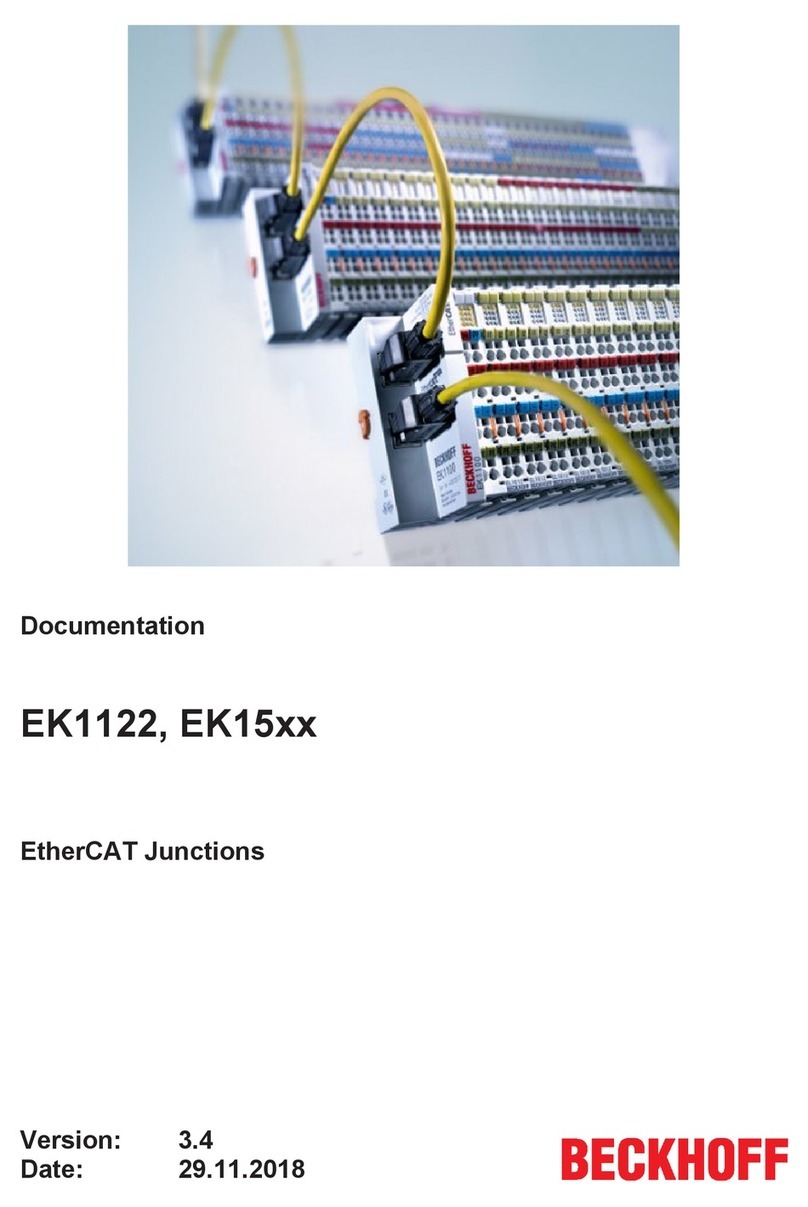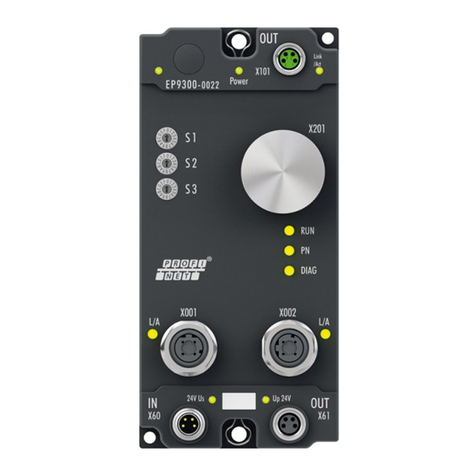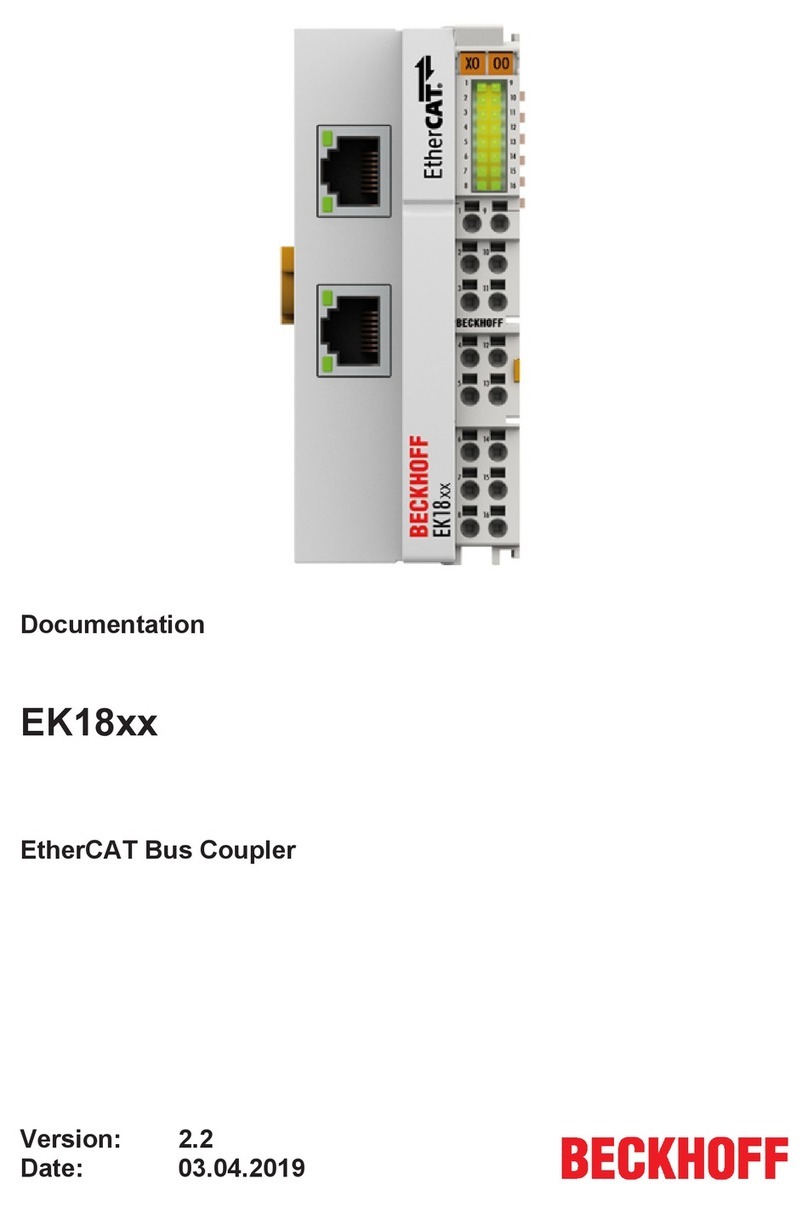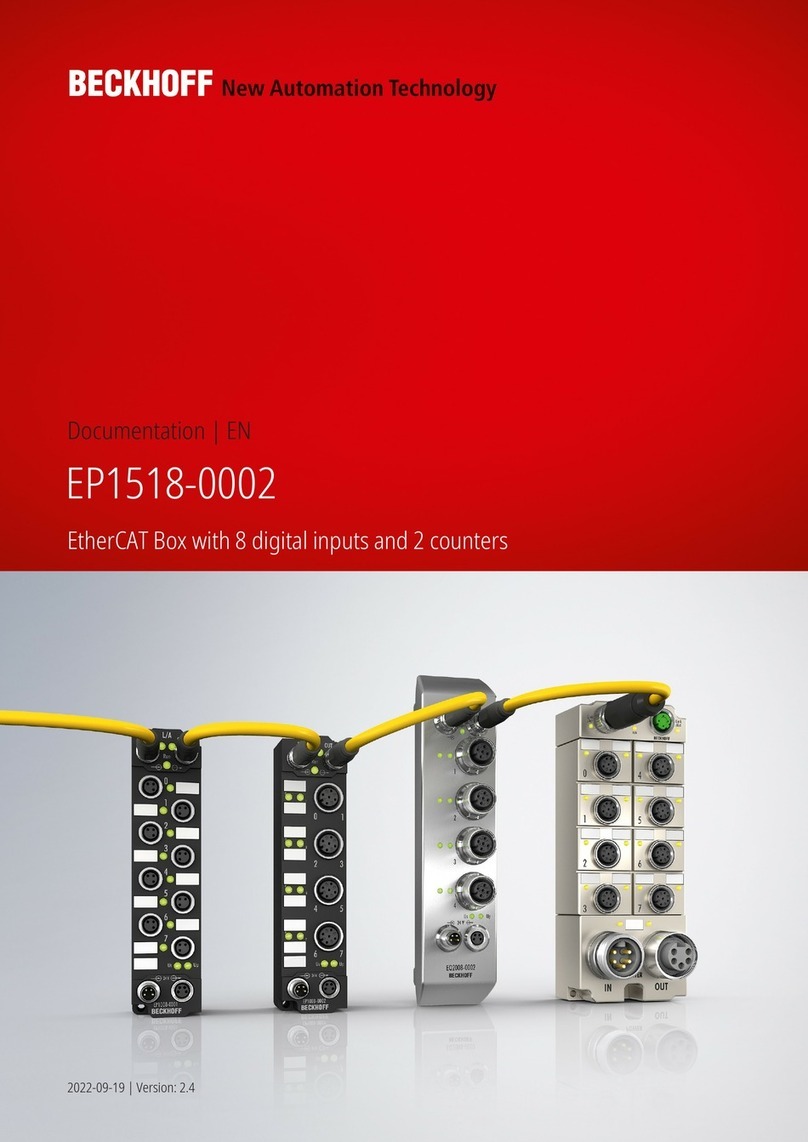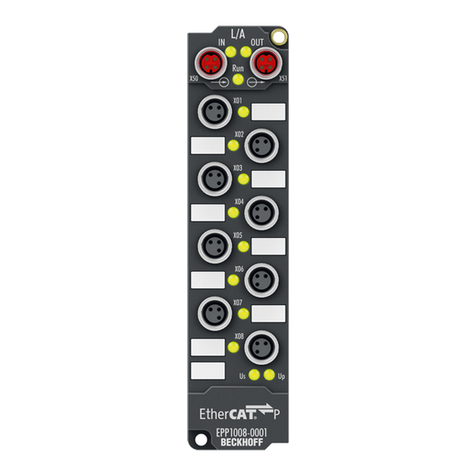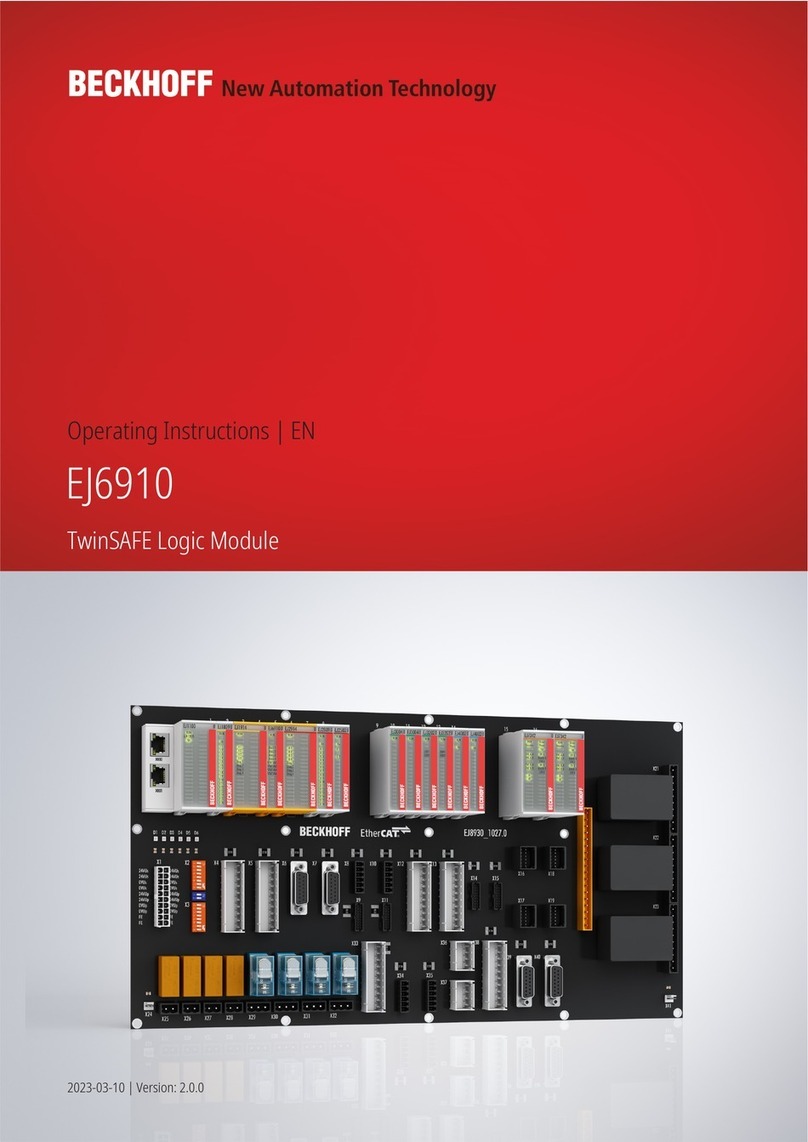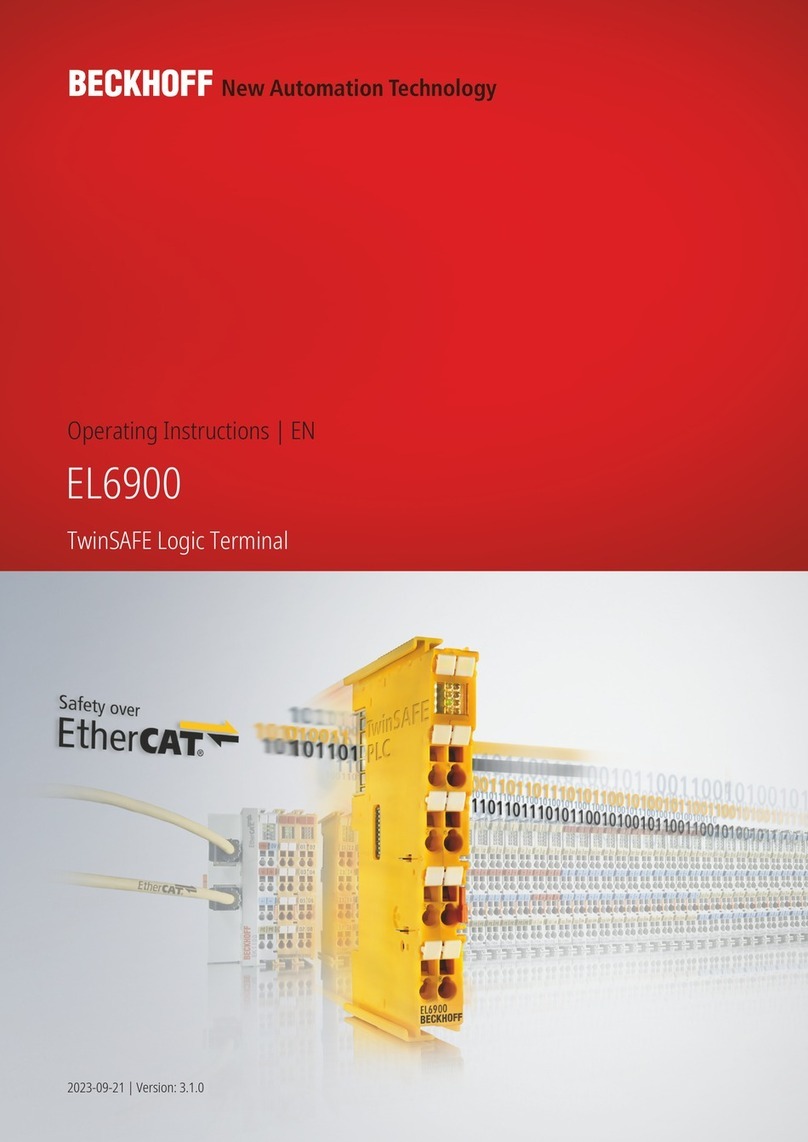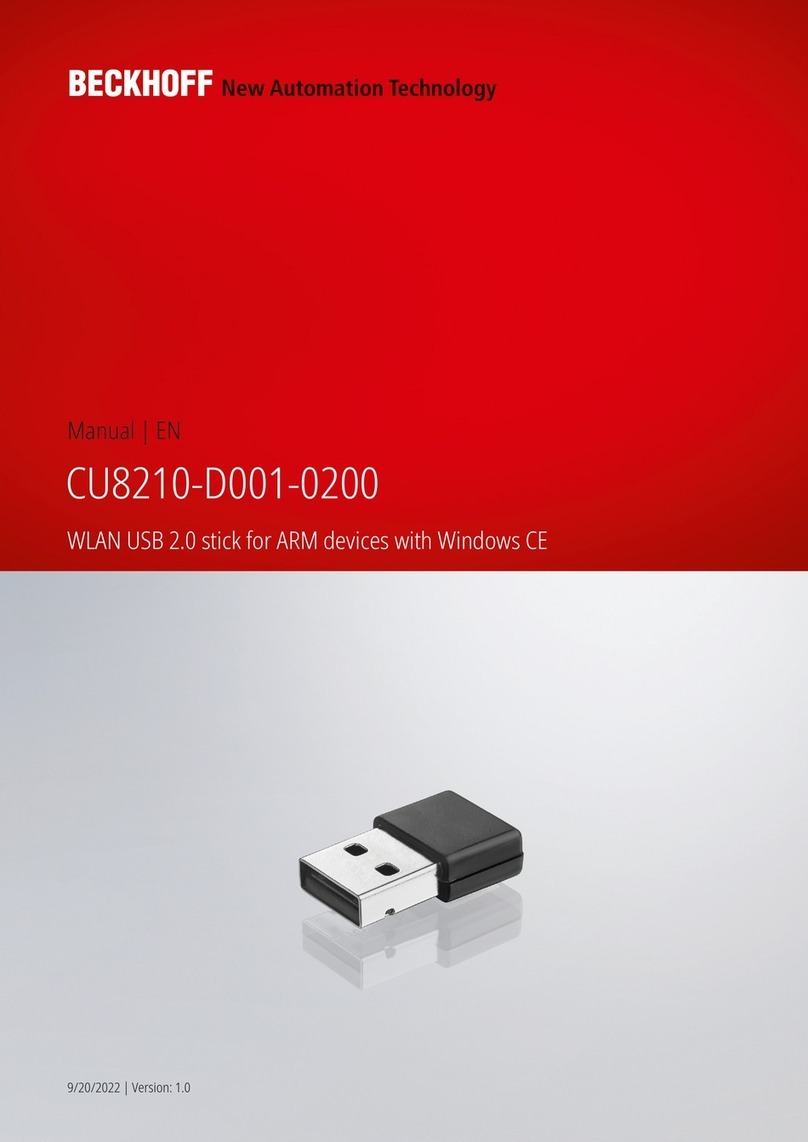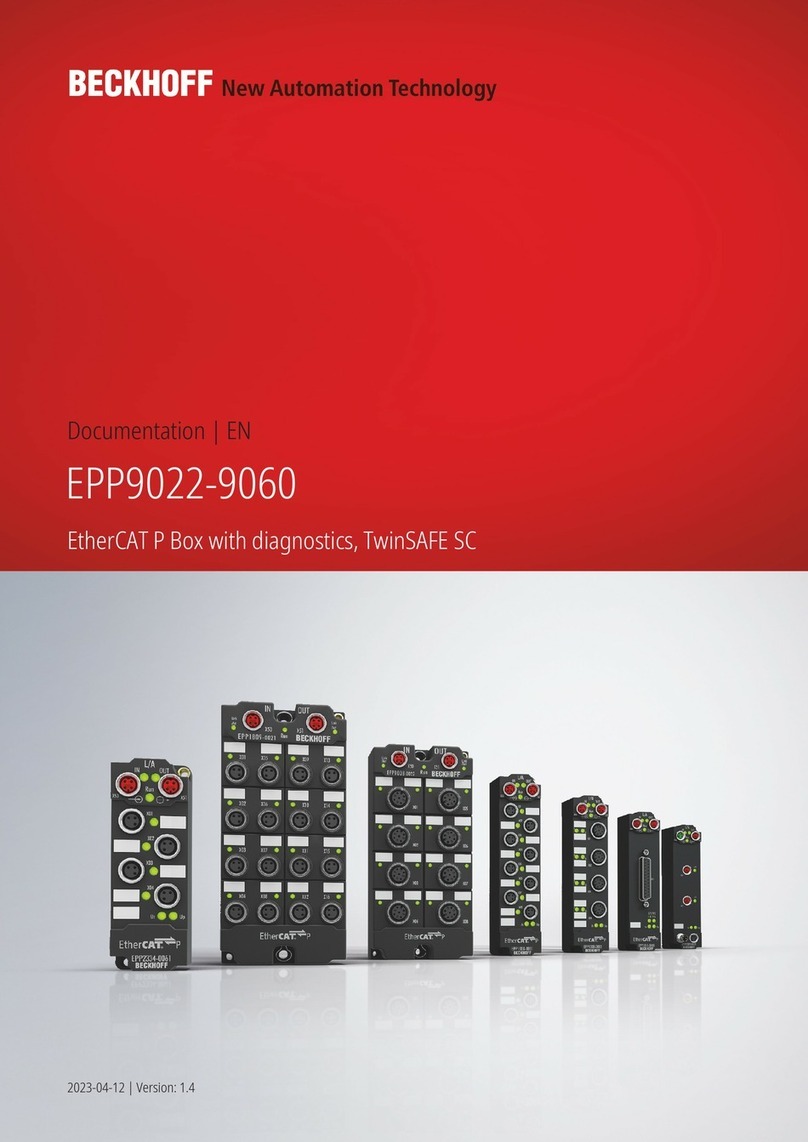
Table of contents
EK112x, EK15xx 3Version: 3.6
Table of contents
1 Foreword....................................................................................................................................................5
1.1 Overview EtherCAT Junctions ..........................................................................................................5
1.2 Notes on the documentation .............................................................................................................6
1.3 Safety instructions.............................................................................................................................7
1.4 Guide through documentation...........................................................................................................8
1.5 Documentation issue status ..............................................................................................................9
1.6 Version identification of EtherCAT devices .....................................................................................10
1.6.1 General notes on marking................................................................................................10
1.6.2 Version identification of EK Couplers...............................................................................11
1.6.3 Beckhoff Identification Code (BIC) ................................................................................... 12
1.6.4 Electronic access to the BIC (eBIC).................................................................................14
2 Product overview ....................................................................................................................................16
2.1 Junction with RJ45 connection........................................................................................................16
2.1.1 EK1122, EK1122-0080 .................................................................................................... 16
2.1.2 EK1121-0010 ...................................................................................................................22
2.2 Junctions with M8 connection .........................................................................................................26
2.2.1 EK1122-0008 ...................................................................................................................26
2.3 Junctions with fiber optic connection...............................................................................................28
2.3.1 EK1521 ............................................................................................................................28
2.3.2 EK1521-0010 ...................................................................................................................30
2.4 Junctions with POF connection.......................................................................................................32
2.4.1 EK1561 ............................................................................................................................32
3 Commissioning/application notes.........................................................................................................34
3.1 Application notes RJ45 junction ......................................................................................................34
3.1.1 EK1121-0010 - Settings and port assignment ................................................................. 34
3.1.2 EK1122 - Settings and port assignment........................................................................... 35
3.2 Application notes M8 junction .........................................................................................................36
3.2.1 EK1122-0008 - Settings and port assignment ................................................................. 36
3.3 Application notes fiber optic junction...............................................................................................37
3.3.1 Principles of fiber-optic technology .................................................................................. 38
3.3.2 EK1521-00x0 - Settings and port assignment.................................................................. 43
3.3.3 Notes on suitable optical fiber cables............................................................................... 44
3.3.4 Application with EK1521 and EK1521-0010 .................................................................... 45
3.4 Application notes POF junction .......................................................................................................47
3.4.1 EK1561 - Settings and port assignment........................................................................... 47
3.4.2 Notes regarding suitable POF cables .............................................................................. 48
3.4.3 Application with EK1561 .................................................................................................. 49
3.5 Notes regarding assembly of POF cables with the connector set ZS1090-0008............................51
4 Error handling and diagnostics .............................................................................................................55
4.1 Diagnostic LEDs EK1121-0010, EK1122, EK1122-0008................................................................55
4.2 Diagnostic LEDs EK1521, EK1521-0010........................................................................................56
4.3 Diagnostic LEDs EK1561................................................................................................................57
5 Mounting and wiring ...............................................................................................................................58
